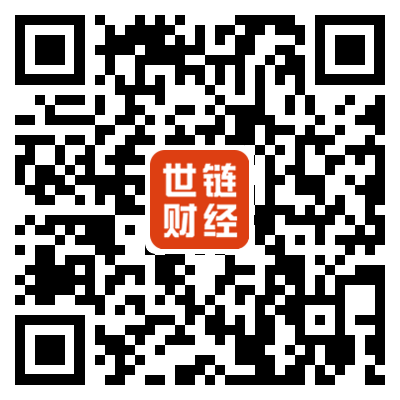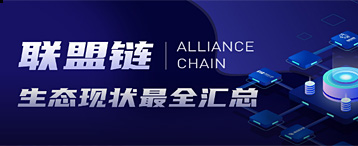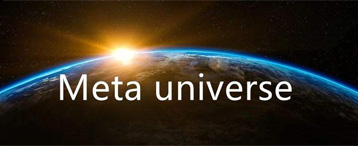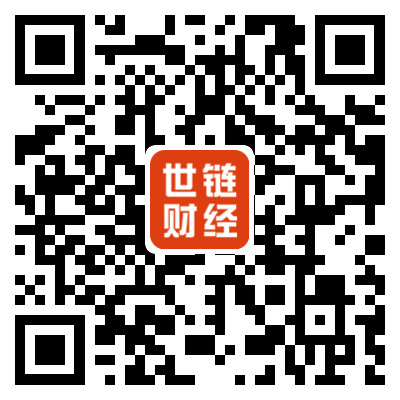-
What is blockchain in the field of information technology?
 linkweb3
linkweb3 2023-02-08
2023-02-08 3501
3501 Tech
Tech
-
Summary:The blockchain solves information technology solutions, the overall effect is better, the coverage is wider, the maintenance cost is reduced, and the network congestion is reduced.
Blockchain is a kind of Internet -based technology that has been highly respected because of its ability to openly verify, record, and distribute transactions in unchanged encrypted classifications. Blockchain technology is based on the concept of distributed classification accounts. The distributed classification account is a method of decentralized catalogs and calculation of a large amount of data. In this article, the application of blockchain in information technology and security will be explored.
What is blockchain technology?
Blockchain technology is a advanced database mechanism that allows transparent sharing information in the corporate network. The blockchain database stores the data in the block, and the database is connected to a chain together. Data is consistent in time, because you cannot delete or modify the chain without network consensus. Therefore, you can use blockchain technology to create unchanged classification accounts in order to track orders, payment, accounts and other transactions. The built -in mechanism of the system can prevent unauthorized transactions and create consistency in the shared view of these transactions.
How does blockchain technology help network security?
The basic principles of blockchain technology, such as decentralization, consensus -driven, and no need to trust, make it natural, safe, vigilant, and resist. The blockchain is automated through data storage to solve the main problems such as network security and artificial errors.
The node in the blockchain system will automatically cross -reference data, and then mark any information about any error statement. Therefore, data based on blockchain -based solutions cannot be tampered with. The advantage of hackers is that they usually use their distribution carefully.
By deploying blockchain technology and decentralized digital assets and security infrastructure, they can defeat hackers in their own games. For example, decentralized DNS entries can help prevent DDOS attacks.
Safety patches, firmware updates and installation procedures can be verified by blockchain technology before executing. This will eliminate any changes in malicious software or other threats that penetrate the safety system unknowingly. In addition, blockchain integration and encryption for verification and verification system access process will exclude any unauthorized entry. decoder. Digital services and consultations about blockchain technology can help you discover and solve the network security needs of your enterprise, and have the opportunity to obtain security, trust and privacy.
What are the functions of blockchain technology?
Blockchain technology has the following main functions:
Decentralization
Decentralization in the blockchain refers to transferring control and decision -making power from centralized entities (individuals, organizations or groups) to distributed networks. Decentralized blockchain network uses transparency to reduce the need for trust among participants. These networks also prevent participants from exerting power or control in a way to weaken network functionality.
Unsophisticated
Uncomvisible refers to certain contents that cannot be changed or changed. Once a participant records the transaction to the shared classification account, no participant can tamper the transaction. If a transaction record contains errors, you must add new transactions to correct errors, and the entire network can be seen in the two transactions.
Consensus
The blockchain system will establish rules for participants to record consensus on transactions. New transactions can be recorded only when most participants in the network agree.
What are the benefits of blockchain technology?
Blockchain technology can bring many benefits to asset transaction management. We will list some of the benefits in the following sections:
Advanced security function
The blockchain system can provide high -level security and trust functions required for modern digital transactions. For someone manipulating the fear of generating fake coins for themselves. However, the blockchain uses the three principles of encryption, decentralization and consensus, and has created a highly secure and almost impossible underlying software system. There will be no single failure, and a single user cannot change the transaction record.
Higher efficiency
A lot of time transactions between enterprises may also cause operating bottlenecks, especially when involving compliance and third -party regulatory agencies. The transparency and smart contracts in the blockchain can make such business transactions faster and more efficient.
Faster audit
Enterprises must be able to generate, exchange, archive and rebuild electronic transactions in a audit way. Blockchain records are unchanged in order, which means that all records are always arranged in order of time. Such data transparent makes the audit process faster.
What key components do blockchain technology contain?
The blockchain architecture contains the following main components:
Distributed classification account
Distributed classification accounts are shared databases used to store transactions in the blockchain network, such as shared files that can be edited by each person in the team. Among most shared text editors, any person with editing authority can delete the entire file. But distributed classification ledger technology has strict rules for who can edit and how to edit. Once the entry has been recorded, you cannot delete them.
Smart contract
Many companies use smart contracts to manage business contracts without the help of third parties. Smart contracts are programs stored on the blockchain system, which will run automatically when they meet the pre -determined conditions. These procedures will be checked in running conditions in order to complete the transaction with confidence. For example, a logistics company may have a smart contract, which agrees that once the product arrives at the port, it will automatically pay.
Public key encryption
Public key encryption is a security function, which is used in the unique participants in the blockchain network. This mechanism will generate two sets of keys for network members. A set of keys is a public key, and everyone in the network is public. Another set of keys is private key, which is unique for each member. The private key and the public key are used to unlock the data in the classification account.
How to use blockchain in different industries?
Blockchain is an emerging technology, and many industries have adopted this technology in innovation. We will introduce some use cases in different industries in the following sections:
Energy
Many energy companies use blockchain technology to create point -to -point energy trading platforms and simplify the acquisition of renewable energy. For example, consider the following use:
Many blockchain -based energy companies have created trading platforms for electricity sales between individuals. Owners with solar panels use this platform to sell their excess solar energy to neighbors. Most of the process is automated: smart meter creation transactions, and blockchain records transactions.
With a blockchain -based crowdfunding plan, users can sponsor and have solar panels in communities that lack energy obtaining. After the solar panel is built, the sponsors can also collect rent from these communities.
Finance
Traditional financial systems (such as banks and stock exchanges) use blockchain services to manage online payment, accounts and market transactions. For example, Singapore Exchange Limited is an investment holding company that provides financial trading services throughout Asia. The company uses blockchain technology to build a more efficient cross -bank payment account. By adopting blockchain, the company solves multiple problems, including batch processing and manual reconciliation of thousands of financial transactions.
Media and entertainment
Many media and entertainment companies use blockchain systems to manage copyright data. Copyright verification is essential for artists' fair compensation. Multiple transactions are required to record the sales or transfer of copyright content. Sony Music Entertainment Japan uses blockchain services to make digital copyright management more efficient. The company has successfully used the blockchain strategy to improve the efficiency of copyright processing and reduce costs.
Retail
Many retail companies use blockchain to track the transfer between suppliers and buyers. For example, Amazon retail applies for a patent for a distributed classification account technology system. The system uses blockchain technology to verify and ensure that all products sold on the platform are genuine. Amazon sellers can allow participants (such as manufacturers, courier companies, distributors, end users, and secondary users) to the certificates to issue an incident to the classification account after registering an agency to map their global supply chain.
The application of blockchain in information and communication technology
"The emergence of information and communication technology has completely changed all aspects of business and society." During the COVID-19 period, multiple industries have accelerated the use of ICT to lead certain trends, such as remote work prevailing in various industries. The emergence of 5G, Web 3.0, artificial intelligence and the emergence of the Yuan universe has brought new opportunities and also brought some problems and concerns.
Enterprises and government agencies have proposed a roadmap for digital transformation or digital strategy, which will determine the progress and development of economic and society in the next ten years.
The decentralized cloud solution based on blockchain can help organizations or other entities safely share idle or spare resources with others in exchange for favorable returns. It can be completed by public classification or private classification, and can be exchanged for resources in the network of connected devices.
The overall effect of this blockchain solution may be higher transparency, wider service or resource availability coverage, reducing maintenance costs, reducing network congestion, reducing environmental impact, and even help to avoid the risk of single -point failure.
Control application in information technology security
The blockchain has the characteristics of distributed, transparent transactions, difficulty in tampering, and a trusted mechanism that does not require third -party endorsements. The needs of distributed deployment, audit mechanism, and trust mechanism that need to be resolved in the big data environment. The combination of blockchain technology and access control technology has the following advantages.
1. Trust of strategy and permissions. Due to the characteristics of the difficulty of tampering in the blockchain, access permissions data and the deployed smart contracts will not be deleted and changed after being stored through the consensus mechanism. Provided security.
2. Strategy and permissions can be verified. Data on the blockchain can be queried, which plays an important role in multi -party information sharing systems. The transparency of the strategy has established the participants' trust in the safety of the system to avoid the problem of "backdoor". The permissions are transparent and difficult to tampered with, so that the communication between the communication can establish a trust mechanism without a third party endorsement, simplify the transaction process and reduce the cost of trust.
3. Distributed ledger. The centralized thought of the blockchain is consistent with the distributed environment in the era of big data. The mechanisms such as the P2P network, consensus algorithm and distributed database in the blockchain are suitable for systems that are applied to distributed architecture. At the same time, the ledger distributed land in the blockchain stores on each node to enhance the robustness of the system. Some nodes in the network will fail to affect the operation of the system or cause data loss. Sexual attack problem.
4. Automation of access strategy. Users can customize smart contracts and deploy them on the blockchain according to their needs. When there is an access request, the system will be based on the logical strategy of the smart contract and the information automation judgment of the request's attributes and characters, and no artificial intervention will interfere with artificial intervention.
5. Fine granular access control. The access permissions of the user's personal data can be stored on the blockchain through the form of the subject of the subject, which has the ability to divide the user data in fine particle size. Excessive collection. The information on the chain is clear and the ownership of the object is clear, and the service provider is convenient for the service provider to send a request directly on the sovereignty. At the same time, the operating information of the service provider can be recorded on the blockchain in a manner. After log analysis, it is found that safe, transparent, and efficient data resource sharing is achieved.
6. Data circulation can be traced. The existing research on the traceability of the blockchain is mainly to face the full cycle tracking records of commodities or tokens. You can learn from this idea, regard user data as a product, use the access permissions on the chain and the access log in the chain, combine the timestamp and signature information, analyze the full cycle circulation process of user data, master the evolution of the data, and thus trace the source to the source Violence and other illegal operations.
The above content introduces the benefits of blockchain technology and the application of information and communication technology. For a relatively novel and highly disruptive technology such as blockchain, it will cause the technological revolution.
Disclaimer:As an open information publishing platform, shilian only represents the author's personal views and has nothing to do with shilian. If the article, picture, audio or video contains infringement, violation or other inappropriate remarks, please provide relevant materials and send it to: 2785592653@qq.com.
Hint:The information provided on this site does not represent any investment suggestion. Investment is risky, and you must be cautious when entering the market.
ShilianFan group:Provide the latest hot news, airdrop candy, red envelopes and other benefits, WeChat: rtt4322.
















